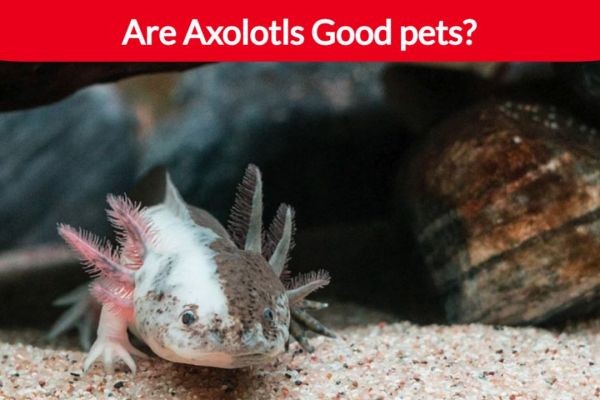Under their pale exteriors, albino animals face unique challenges and adaptations—how do they truly differ from their fully pigmented counterparts?
08/14/24 • 102 Views
Albino animals exhibit a genetic condition resulting from mutations inhibiting melanin production. This causes white or pinkish skin/fur and red or pink eyes, as melanin absence affects eye pigmentation. They struggle with poor eyesight because melanin is essential for retinal development and are vulnerable to UV damage, increasing skin cancer risks. Albino animals also face social and reproductive challenges due to their distinct appearance. Unlike regular animals, they lack any melanin, leading to distinctive physical and health issues. Leucistic animals, by contrast, have partial pigment loss and normal eye colors. You'll uncover more intriguing aspects of albinism by exploring further.
Key Takeaways
- Albino animals lack melanin entirely, resulting in white or pinkish skin, fur, and red or pink eyes.
- Genetic mutations, particularly TYR gene mutations, cause albinism by disrupting melanin synthesis.
- Albino animals suffer from poor eyesight, light sensitivity, and increased susceptibility to skin damage from UV radiation.
- Unlike regular animals, albino animals face significant social challenges impacting their reproductive success.
- Albino animals differ from leucistic animals, which have reduced pigment levels and typically normal-colored eyes.
Understanding Albinism
Albinism, a genetic condition resulting from the absence of melanin, leads to distinctive features such as white or pinkish skin/fur and red/pink eyes. As an albino, you'd lack melanin, the pigment responsible for coloration in skin, fur, and eyes. This absence of melanin doesn't just alter appearance; it also impacts various biological functions. For instance, studies indicate that albino animals often have poor eyesight. This is because melanin plays an essential role in the development of the retina, and without it, visual acuity diminishes. Consequently, albino animals may struggle with depth perception and focus, making them more susceptible to predators.
Moreover, the lack of melanin means albino animals have less protection from ultraviolet (UV) radiation, increasing their risk of skin damage and cancer. Their distinctive coloring also makes them more visible to predators, which can be a significant disadvantage in the wild. Furthermore, albino animals may face social challenges. Research has shown that their conspicuous appearance can make it difficult to find mates, affecting their reproductive success. These factors collectively highlight the unique challenges that albino animals encounter, emphasizing the significant impact of melanin absence on their lives.
Genetic Causes of Albinism
You'll find that albinism arises from specific genetic mutations that hinder melanin production. Studies have shown that these mutations are inherited and disrupt the synthesis of melanin in the skin, fur, and eyes. Consequently, albino animals exhibit distinctive pigmentation characteristics due to this melanin production deficiency.
Melanin Production Deficiency
In the domain of genetic disorders, a deficiency in melanin production, due to mutations affecting melanocytes, leads to the distinctive characteristics of albinism observed across various animal species. When a genetic mutation disrupts the normal function of melanocytes, these cells fail to synthesize melanin effectively. Melanin, the pigment responsible for imparting color to skin, fur, and eyes, is vital for normal pigmentation. Without it, animals exhibit white or pinkish skin and fur, along with red or pink eyes, resulting from the visibility of blood vessels.
Scientific studies have shown that the absence of melanin doesn't just alter appearance but also affects other physiological aspects. For instance, melanin plays a role in protecting skin from ultraviolet radiation, meaning albino animals are more susceptible to sunburn and skin cancers. Additionally, the lack of pigmentation in the eyes can cause vision problems, as melanin is essential for normal eye development and function.
In various species, the extent and implications of albinism can vary, but the fundamental cause remains the same: a genetic mutation leading to melanin production deficiency. Understanding these genetic underpinnings allows scientists to grasp the broader impact of albinism beyond just its visible traits.
Inherited Genetic Mutations
The genetic basis of albinism involves inherited mutations in several genes critical for melanin production, most importantly the tyrosinase gene (TYR), which has been extensively studied for its role in encoding an enzyme essential for the synthesis of melanin. When there's a mutation in the TYR gene, the enzyme's function is impaired or absent, leading to a complete lack of melanin. This absence of melanin results in animals with white or pinkish skin, fur, or feathers and red or pink eyes.
In albinism, the inheritance pattern is typically autosomal recessive, meaning both parents must carry the gene mutation for their offspring to exhibit albino traits. Genetic testing can confirm the presence of these mutations and differentiate albinism from other conditions like leucism.
Here are some key points to keep in mind:
- Genetic Mutations: Inherited mutations in genes like TYR disrupt melanin production.
- Autosomal Recessive Inheritance: Both parents must carry the mutation for albinism to manifest.
- Lack of Pigmentation: Results in white or pinkish appearance and increased vulnerability to predators.
- Genetic Testing: Confirms albinism and differentiates it from similar conditions.
Studies continually expand our understanding of these genetic mutations, offering insights into their broader implications on animal health and survival.
Physical Characteristics
Due to the absence of melanin, albino animals exhibit distinctive physical traits such as white or pinkish skin, fur, and feathers, while their eyes appear red or pink because of the unpigmented blood vessels in the retina. This unique eye color is a direct consequence of the lack of melanin, which is essential for pigmentation in the iris. In a study conducted by the National Institutes of Health, it was noted that the absence of melanin can greatly alter the appearance of an animal's eyes, making them more susceptible to light and potentially impacting their overall vision.
Albino animals also display a stark contrast in their overall pigmentation compared to regular animals. For instance, regular animals possess a variety of pigments, resulting in diverse skin, fur, and feather colors. These pigments, primarily formed by melanin, play an important role in camouflage, social signaling, and protection from ultraviolet radiation.
Without this pigmentation, albino animals not only stand out visually but are also more vulnerable to environmental stressors and predators. Additionally, the lack of melanin might also make their skin more susceptible to damage from sunlight, as melanin provides a degree of natural protection against UV rays.
Vision and Eye Problems
Moreover, when examining the vision and eye problems in albino animals, you'll notice significant light sensitivity issues due to their lack of melanin. This absence of pigmentation often results in compromised depth perception, as evidenced by studies showing difficulties in spatial orientation. Additionally, the colorless iris allows excessive light penetration, exacerbating eye health complications and impairing their overall visual acuity.
Light Sensitivity Issues
Albino animals often suffer from extreme light sensitivity, a condition exacerbated by the absence of protective pigmentation in their eyes, leading to a range of vision problems, from poor eyesight to complete blindness. This lack of melanin means their red eyes are particularly vulnerable to UV damage, making them more prone to various eye issues. Studies have shown that light can easily penetrate their colorless irises, which greatly affects their ability to see clearly and navigate their environment.
For you to understand the breadth of these issues, consider the following key points:
- Photosensitivity: Albino animals often experience discomfort or pain in bright light conditions, affecting their daily activities.
- UV Damage: The absence of natural pigmentation leaves their eyes unprotected from harmful UV rays, leading to potential long-term damage.
- Poor Vision: Many albino animals have compromised vision due to structural and functional deficiencies in their eyes.
- Navigational Challenges: Due to their heightened light sensitivity, these animals find it difficult to navigate their surroundings, especially in brightly lit conditions.
Depth Perception Challenges
The absence of pigmentation in albino animals' eyes greatly impairs their depth perception, leading to challenges in spatial judgment and movement coordination. This is primarily because their irises lack the melanin needed to block excessive light, causing light to scatter inside the eye. Albino animals often have blue eyes, which are more prone to light penetration, exacerbating their depth perception issues. Studies indicate that this lack of pigmentation results in an inability to accurately judge distances, essential for tasks such as hunting and evading predators.
In albino animals, the retina and other eye structures are heavily impacted by the absence of melanin. The unfiltered light that reaches the retina tends to overwhelm the photoreceptors, leading to blurred vision and reduced visual acuity. This isn't only detrimental to locating prey but also increases the risk of collisions and falls, severely impacting their survival in the wild.
Additionally, the spatial disorientation caused by poor depth perception can lead to inefficient energy expenditure. Albino animals may find it more challenging to navigate complex environments, thereby limiting their ability to establish territories and find mates. This visual handicap underscores the importance of pigmentation in maintaining effective depth perception and overall survival.
Eye Health Complications
Without melanin, the eyes of albino animals are extremely sensitive to light, making them susceptible to a range of vision complications, including photophobia and increased risk of UV damage. This heightened sensitivity stems from the lack of pigmentation, which normally protects the eyes by absorbing light. Studies have shown that albino animals often exhibit significant eye health complications due to the absence of melanin.
Here are some key eye health complications observed in albino animals:
- Photophobia: The intense aversion to bright light, causing discomfort and difficulty in maneuvering their environment.
- Nystagmus: Involuntary eye movement, which can impair vision and make it challenging to focus on objects.
- Strabismus: Misalignment of the eyes, leading to issues with depth perception and coordination.
- Retinal Damage: Increased susceptibility to UV radiation can lead to retinal damage, impairing vision over time.
These complications can severely impact an albino animal's ability to hunt, avoid predators, and generally interact with its environment. For instance, photophobia can make it nearly impossible for them to move around during daylight hours, increasing their vulnerability.
Survival Challenges
Getting around the wild poses a formidable challenge for albino animals, as their impaired vision greatly hampers both hunting efficiency and predator evasion, according to recent studies. Research highlights that albino predators struggle to track and capture prey, greatly reducing their hunting success rates. Conversely, their conspicuous appearance makes them easy targets for natural predators.
Adding to their woes, albino animals lack the natural camouflage that aids in blending with their surroundings. This visibility makes them more susceptible to attacks and less likely to escape unnoticed. Their striking white coats, while fascinating, turn them into beacons in the wild, further compromising their safety.
Moreover, albino animals face substantial reproductive challenges. They often struggle to find mates due to their distinct appearance, which may not be favored within their species. This difficulty in securing partners impacts their ability to reproduce and sustain their populations.
Human-induced threats also compound their survival difficulties. Poachers often target albino animals for the exotic pet trade, drawn by their rarity and unique looks. Sanctuaries and zoos play an important role in providing safe havens for these vulnerable creatures, protecting them from these multifaceted threats.
Albinism Vs. Leucism
Among the fascinating distinctions between albinism and leucism, albinism results from a complete lack of melanin production, whereas leucism involves a partial loss of pigmentation, often leaving animals with pale or patchy skin and normal-colored eyes. Albino animals exhibit an absolute absence of melanin, leading to characteristic white or pinkish skin or fur and red or pink eyes. This lack of melanin is typically linked to specific genetic mutations that inhibit melanin production.
Leucism, however, is characterized by a reduction in various types of pigment, not just melanin. This condition results in animals displaying a range of pale or patchy coloration but retaining their normal eye color. Unlike albinism, leucism can have diverse genetic causes and inheritance patterns, as noted in various genetic studies.
To better understand these differences, consider the following:
- Pigment Production: Albino animals lack melanin entirely, while leucistic animals have reduced pigment levels.
- Eye Color: Albino animals have red or pink eyes due to the lack of pigment, whereas leucistic animals typically have normal-colored eyes.
- Genetic Basis: Albinism is linked to specific mutations, while leucism can result from various genetic factors.
- Health Implications: Albino animals often face vision problems and skin sensitivity, unlike leucistic animals, which generally don't have these issues.
Understanding these distinctions is essential for studying and conserving diverse animal populations.
Conservation Efforts
Conservation efforts for albino animals emphasize the importance of creating protected habitats and implementing measures to shield them from natural predators. Sanctuaries and wildlife reserves are pivotal in these efforts, providing safe environments where albino animals can thrive without the constant threat of predation. These protected areas are meticulously managed to guarantee that albino populations can grow and maintain genetic diversity, which is essential for their long-term survival.
Conservationists not only focus on physical protection but also work tirelessly to raise awareness about the unique challenges these animals face. Albino animals are more susceptible to UV radiation, have poorer eyesight, and are visually conspicuous, making them easy targets for predators. Collaborative conservation programs, often involving multiple organizations, aim to address these issues comprehensively.
Here's a table illustrating key aspects of conservation efforts:
| Focus Area | Description |
|---|---|
| Protected Habitats | Creation of sanctuaries and wildlife reserves to ensure safe living conditions. |
| Genetic Diversity | Initiatives to maintain and enhance genetic variation within albino populations. |
| Awareness Campaigns | Efforts to inform the public about the specific needs and challenges of albino animals. |
| Collaborative Programs | Joint efforts by various organizations to support albino animal conservation. |
Conclusion
In understanding albino animals, you've learned they face unique challenges. Especially, only about 1 in 20,000 mammals exhibit albinism, underscoring its rarity (source: National Institutes of Health). These animals struggle with vision issues and higher predation risks due to their lack of camouflage. Conservation efforts are essential, as their survival rates are noticeably lower than their pigmented counterparts.
By appreciating these differences, you're contributing to a deeper understanding and protection of these unique creatures.









